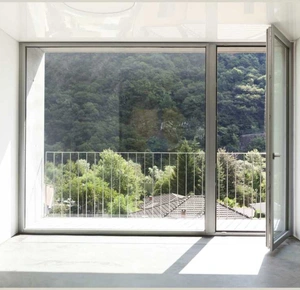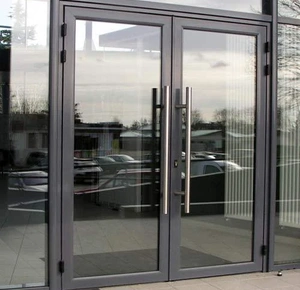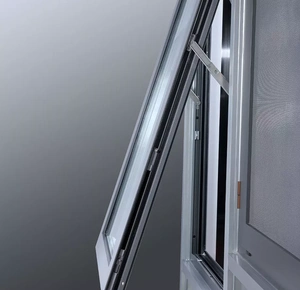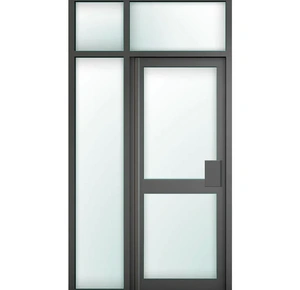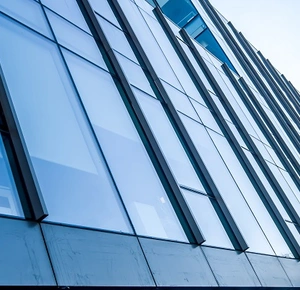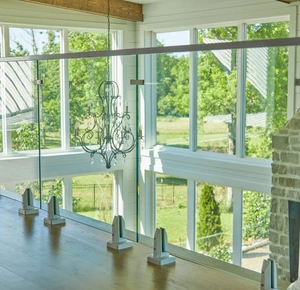The Difference Between Anodizing and Powder Coating for Aluminum
Aluminum is a widely used material in various industries due to its lightweight, durability, and resistance to corrosion. However, to enhance its appearance and protect it further, aluminum is often treated with finishes like anodizing or powder coating. Both processes offer unique advantages, but they differ significantly in their application, performance, and appearance.
In this article, we’ll explore the differences between anodizing and powder coating for aluminum, discussing how each process works, their benefits, and the situations where one might be more suitable than the other.
1. What is Anodizing?
Anodizing is an electrochemical process that alters the surface of the aluminum by creating a protective oxide layer. This process enhances the material's natural oxide film, making it more durable, corrosion-resistant, and receptive to color.
How does anodizing work?
- The aluminum is immersed in an acidic electrolyte bath.
- An electric current is passed through the bath, causing oxygen ions to bond with the aluminum surface, creating a thick layer of aluminum oxide.
- The anodized layer is integrated into the material itself, making it a part of the aluminum’s surface.
Key Features of Anodizing:
- The anodized coating is non-reactive and does not peel, chip, or flake because it is part of the aluminum itself.
- Anodizing can be combined with dyes to produce colored finishes, though the range of colors is typically more limited compared to powder coating.
- The anodized layer is transparent, allowing the natural metallic sheen of aluminum to remain visible.
2. What is Powder Coating?
Powder coating is a process where a dry powder is applied to the surface of aluminum and then cured in an oven to form a hard, protective layer. Unlike anodizing, powder coating sits on the surface of the material, creating a durable, decorative finish.
How does powder coating work?
- The aluminum surface is cleaned to remove any contaminants.
- An electrostatic charge is applied to the aluminum, which helps attract the powder particles.
- The powdered aluminum is then baked in an oven, where the powder melts and fuses to the surface, forming a smooth, continuous coating.
Key Features of Powder Coating:
- Powder coating provides a thick, protective layer that is resistant to scratches, chipping, and corrosion.
- It offers a wide range of color choices, including matte, gloss, and textured finishes.
- The powder coating layer is not transparent, so it completely covers the aluminum’s natural appearance.
3. Durability and Protection
When it comes to durability, both anodizing and powder coating offer high levels of protection, but they achieve this in different ways. Understanding their differences can help you determine which process is better suited for your application.
Anodizing:
- The anodized surface is extremely hard and abrasion-resistant, making it ideal for applications where the material will experience wear and tear, such as architectural elements, automotive parts, or electronics.
- The anodic layer is also highly resistant to corrosion, especially in outdoor and marine environments, making it a popular choice for window frames, railings, and other exterior applications.
- Since anodizing becomes a part of the aluminum’s surface, it is unlikely to chip or peel.
Powder Coating:
- Powder coating creates a thicker layer than anodizing, which provides excellent protection against impact and surface damage, such as scratches or dents.
- It is also highly resistant to corrosion, especially when paired with a pre-treatment such as phosphate or chromate conversion coating.
- Powder-coated aluminum is commonly used in automotive components, outdoor furniture, and appliances due to its ability to withstand harsh environmental conditions without fading or chipping.
4. Aesthetic Options and Appearance
Both anodizing and powder coating offer attractive finishes, but their visual effects and customization options vary significantly.
Anodizing:
- Anodized finishes enhance the natural look of aluminum. The transparent oxide layer allows the metal’s grain and sheen to show through, giving it a metallic, satin or matte finish.
- Anodizing provides a limited range of colors, typically in metallic or earth tones, such as silver, bronze, black, and gold. Dyes can be applied during the process to introduce more color options, but these tend to be more muted compared to powder coating.
- The anodized finish is UV-resistant, meaning the color won’t fade when exposed to sunlight, making it ideal for exterior applications.
Powder Coating:
- Powder coating offers a broader spectrum of colors and finishes, from high-gloss and matte to textured or metallic. Custom colors can easily be created to meet design specifications.
- Because powder coating sits on the surface of the aluminum, it provides a solid, opaque finish. This makes it ideal for applications that require a uniform color or specific design elements.
- However, powder coating may be more prone to fading when exposed to direct sunlight over long periods, especially in environments with high UV exposure.
5. Cost Considerations
When selecting a finishing process, cost is an important factor. The overall expense of anodizing and powder coating can vary based on the scope of the project, but here’s a general comparison:
Anodizing:
- Anodizing is generally more expensive than powder coating due to the electrochemical process involved. The price can increase further if you require custom colors or thicker anodized layers.
- The durability and longevity of anodized finishes, however, can offset the initial higher costs, making it a cost-effective solution for long-term projects.
Powder Coating:
- Powder coating is often more affordable than anodizing, especially for large projects or when a specific color or finish is required.
- The cost-effectiveness of powder coating makes it a popular choice for commercial and industrial applications where visual appeal and durability are required without a high price tag.
6. Environmental Considerations
In today’s world, environmental impact is a crucial consideration for many industries. Both anodizing and powder coating have their environmental advantages.
Anodizing:
- The anodizing process uses non-toxic, natural materials, and the oxide layer it creates is chemically stable and environmentally friendly. The waste products from anodizing, such as wastewater, are generally easy to treat and dispose of responsibly.
- However, anodizing does involve using acids and electricity, which can have a higher environmental impact if not managed correctly.
Powder Coating:
- Powder coating is considered eco-friendly because it produces very little waste. Any excess powder can be collected and reused, reducing the overall material waste. Additionally, powder coating does not contain harmful solvents or VOCs (volatile organic compounds), making it safer for the environment.
- The curing process in powder coating, which requires heat, consumes energy, but the overall environmental footprint is still relatively low compared to some other finishing methods.
7. Choosing Between Anodizing and Powder Coating
Ultimately, choosing between anodizing and powder coating depends on your specific needs and the application of the aluminum.
- Choose anodizing if you’re looking for a durable, corrosion-resistant finish that enhances the natural appearance of aluminum. It’s ideal for exterior applications where the aluminum will be exposed to the elements, such as architectural facades, railings, and windows.
- Choose powder coating if you need a wide range of colors and finishes for a decorative or protective layer. Powder coating is well-suited for automotive components, outdoor furniture, and projects where aesthetic flexibility and cost-effectiveness are priorities.
Conclusion
Both anodizing and powder coating offer distinct advantages for finishing aluminum, and each process excels in different areas. Anodizing integrates with the metal itself, providing a tough, corrosion-resistant finish that retains the material's natural look, while powder coating offers a thicker, colorful, and highly protective finish. By understanding the pros and cons of each method, you can make an informed decision that best suits your project's functional, aesthetic, and budgetary needs.
Frequently Question and Answers
What is the difference between anodizing and powder coating for aluminum?
Anodizing is an electrochemical process that creates a durable oxide layer on the aluminum surface, while powder coating applies a protective powder to the surface that is baked on, forming a solid, durable layer.
Which is more durable, anodizing or powder coating?
Both are durable, but anodizing creates a hard, scratch-resistant surface that is part of the aluminum itself. Powder coating offers a thicker layer of protection and is more resistant to impacts and surface damage.
Can anodizing and powder coating prevent corrosion?
Yes, both methods offer corrosion protection. Anodizing is naturally resistant to corrosion because it forms a protective oxide layer, while powder coating provides a thick barrier that shields the aluminum from moisture and the elements.
Which process offers more color options, anodizing or powder coating?
Powder coating provides a wider variety of colors and finishes, including matte, gloss, and textured finishes. Anodizing offers more limited colors, typically in metallic or natural tones.
Is powder coating environmentally friendly?
Yes, powder coating is considered eco-friendly because it produces minimal waste, and excess powder can be reused. It also doesn’t contain harmful solvents or VOCs (volatile organic compounds).
When should I choose anodizing over powder coating?
Choose anodizing if you want a finish that preserves the natural look of aluminum and provides long-term corrosion resistance. Anodizing is also ideal for exterior applications where UV resistance and minimal maintenance are essential.
